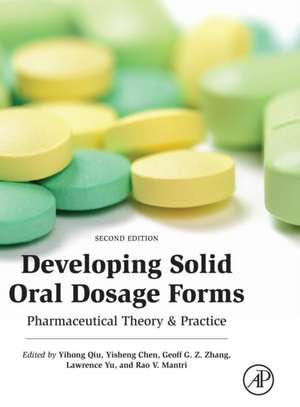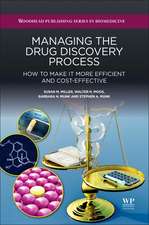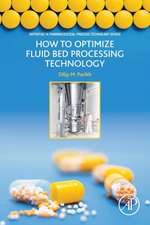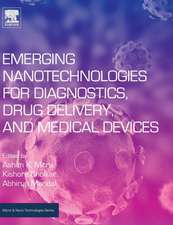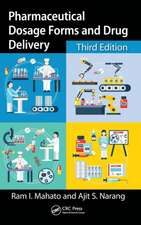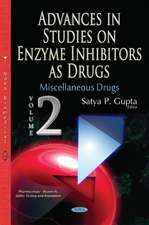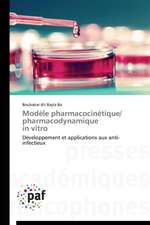Developing Solid Oral Dosage Forms: Pharmaceutical Theory and Practice
Editat de Yihong Qiu, Yisheng Chen, Geoff G.Z. Zhang, Lawrence Yu, Rao V. Mantrien Limba Engleză Hardback – 28 noi 2016
This book covers the essential principles of physical pharmacy, biopharmaceutics, and industrial pharmacy, and their application to the research and development process of oral dosage forms. Chapters have been added, combined, deleted, and completely revised as necessary to produce a comprehensive, well-organized, valuable reference for industry professionals and academics engaged in all aspects of the development process.
New and important topics include spray drying, amorphous solid dispersion using hot-melt extrusion, modeling and simulation, bioequivalence of complex modified-released dosage forms, biowaivers, and much more.
- Written and edited by an international team of leading experts with experience and knowledge across industry, academia, and regulatory settings
- Includes new chapters covering the pharmaceutical applications of surface phenomenon, predictive biopharmaceutics and pharmacokinetics, the development of formulations for drug discovery support, and much more
- Presents new case studies throughout, and a section completely devoted to regulatory aspects, including global product regulation and international perspectives
Preț: 1464.70 lei
Preț vechi: 1683.94 lei
-13% Nou
280.26€ • 293.41$ • 231.90£
Carte tipărită la comandă
Livrare economică 31 martie-14 aprilie
Specificații
ISBN-10: 012802447X
Pagini: 1176
Dimensiuni: 216 x 276 x 45 mm
Greutate: 2.97 kg
Ediția:2
Editura: ELSEVIER SCIENCE
Public țintă
Pharmaceutical researchers in industry and at academic institutions focused on developing solid dosage forms for drug delivery; professors and students involved in advanced graduate level courses in pharmaceutical sciences programsCuprins
Part I: Theories and Techniques in the Characterization of Drug Substances and Excipients
Chapter 1. Solubility of Pharmaceutical Solids
Chapter 2. Crystalline and Amorphous Solids
Chapter 3. Solid-State Characterization and Techniques
Chapter 4. API Solid-Form Screening and Selection
Chapter 5. Drug Stability and Degradation Studies
Chapter 6. Excipient Compatibility and Functionality
Chapter 7. Polymer Properties and Characterization
Chapter 8. Interfacial Phenomena
Chapter 9. Fundamental of Diffusion and Dissolution
Chapter 10. Particle, Powder, and Compact Characterization
Part II: Biopharmaceutical and Pharmacokinetic Evaluations of Drug Molecules and Dosage Forms
Chapter 11. Oral Absorption Basics: Pathways and Physicochemical and Biological Factors Affecting Absorption
Chapter 12. Oral Drug Absorption: Evaluation and Prediction
Chapter 13. Dissolution Testing of Solid Products
Chapter 14. Bioavailability and Bioequivalence
Chapter 15. Predictive Biopharmaceutics and Pharmacokinetics: Modeling and Simulation
Chapter 16. In Vitro/In Vivo Correlations: Fundamentals, Development Considerations, and Applications
Part III: Design, Development and Scale-Up of Formulation and Manufacturing Process
Chapter 17. Oral Formulations for Preclinical Studies: Principle, Design, and Development Considerations
Chapter 18. Rational Design for Amorphous Solid Dispersions
Chapter 19. Rational Design of Oral Modified-Release Drug Delivery Systems
Chapter 20. Product and Process Development of Solid Oral Dosage Forms
Chapter 21. Analytical Development and Validation for Solid Oral Dosage Forms
Chapter 22. Statistical Design and Analysis of Long-Term Stability Studies for Drug Products
Chapter 23. Packaging Selection for Solid Oral Dosage Forms
Chapter 24. Clinical Supplies Manufacture: Strategy, GMP Considerations, and Cleaning Validation
Chapter 25. Specification Setting and Manufacturing Process Control for Solid Oral Drug Products
Chapter 26. Process Development, Optimization, and Scale-Up: Providing Reliable Powder Flow and Product Uniformity
Chapter 27. Capsules Dosage Form: Formulation and Manufacturing Considerations
Chapter 28. Design, Development, and Scale-Up of the High-Shear Wet Granulation Process
Chapter 29. Process Development, Optimization, and Scale-Up: Fluid-Bed Granulation
Chapter 30. Formulation, Process Development, and Scale-Up: Spray-Drying Amorphous Solid Dispersions for Insoluble Drugs
Chapter 31. Process Development and Scale-Up: Twin-Screw Extrusion
Chapter 32. Development, Scale-Up, and Optimization of Process Parameters: Roller Compaction Theory and Practice
Chapter 33. Development, Optimization, and Scale-Up of Process Parameters: Tablet Compression
Chapter 34. Development, Optimization, and Scale-Up of Process Parameters: Pan Coating
Chapter 35. Development, Optimization, and Scale-Up of Process Parameters: Wurster Coating
Chapter 36. Commercial Manufacturing and Product Quality
Chapter 37. Emerging Technology for Modernizing Pharmaceutical Production: Continuous Manufacturing
Part IV: Regulatory Aspects of Product Development
Chapter 38. Drug Product Approval in the United States and International Harmonization
Chapter 39. Modern Pharmaceutical Regulations: Quality Assessment for Drug Substances
Chapter 40. Modern Pharmaceutical Regulations: Quality Assessment for Drug Products
Descriere
Developing Solid Oral Dosage Forms: Pharmaceutical Theory and Practice, Second Edition illustrates how to develop high-quality, safe, and effective pharmaceutical products by discussing the latest techniques, tools, and scientific advances in preformulation investigation, formulation, process design, characterization, scale-up, and production operations.
This book covers the essential principles of physical pharmacy, biopharmaceutics, and industrial pharmacy, and their application to the research and development process of oral dosage forms. Chapters have been added, combined, deleted, and completely revised as necessary to produce a comprehensive, well-organized, valuable reference for industry professionals and academics engaged in all aspects of the development process.
New and important topics include spray drying, amorphous solid dispersion using hot-melt extrusion, modeling and simulation, bioequivalence of complex modified-released dosage forms, biowaivers, and much more.
- Written and edited by an international team of leading experts with experience and knowledge across industry, academia, and regulatory settings
- Includes new chapters covering the pharmaceutical applications of surface phenomenon, predictive biopharmaceutics and pharmacokinetics, the development of formulations for drug discovery support, and much more
- Presents new case studies throughout, and a section completely devoted to regulatory aspects, including global product regulation and international perspectives
